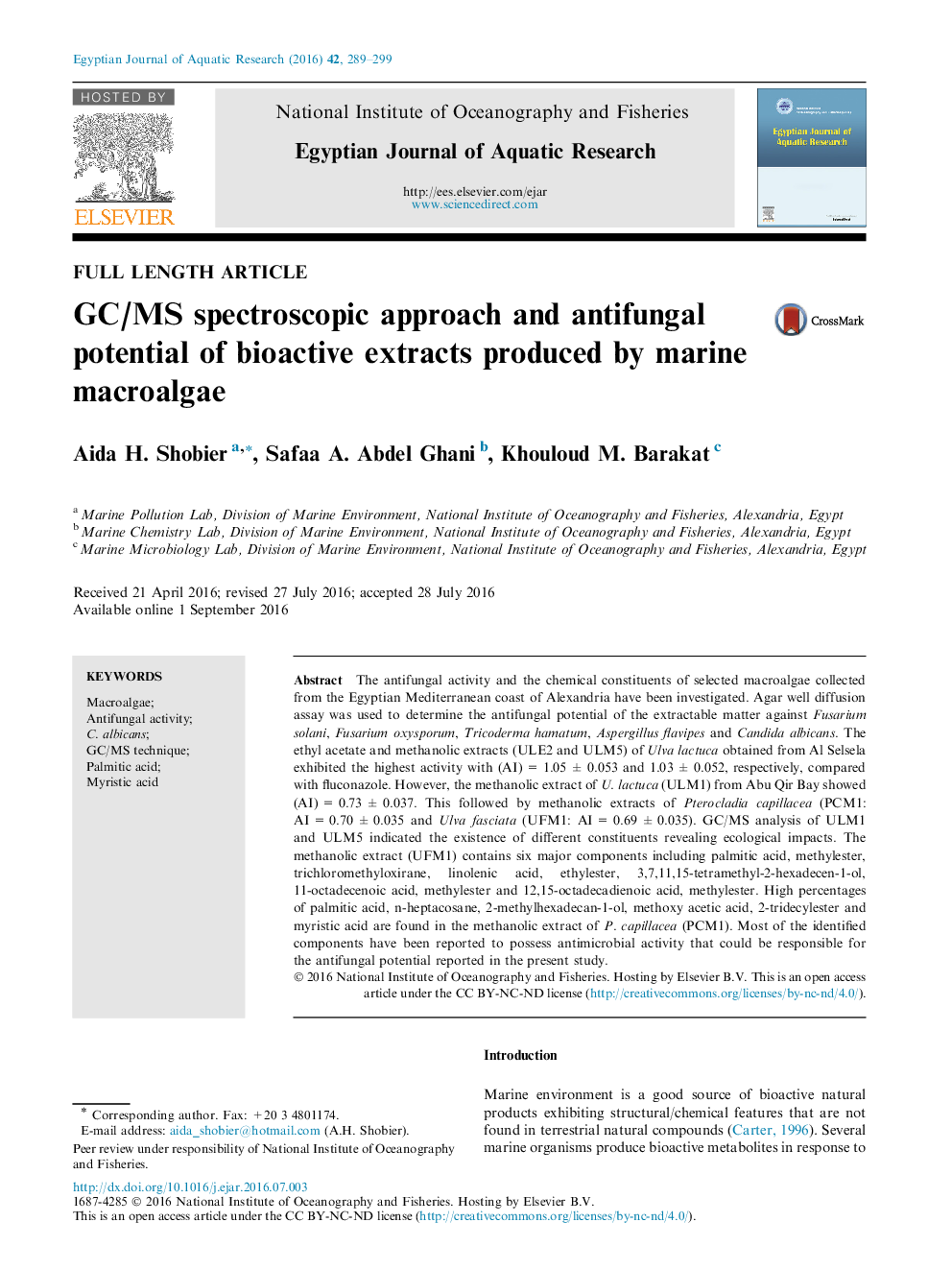| Article ID | Journal | Published Year | Pages | File Type |
|---|---|---|---|---|
| 4493024 | The Egyptian Journal of Aquatic Research | 2016 | 11 Pages |
The antifungal activity and the chemical constituents of selected macroalgae collected from the Egyptian Mediterranean coast of Alexandria have been investigated. Agar well diffusion assay was used to determine the antifungal potential of the extractable matter against Fusarium solani, Fusarium oxysporum, Tricoderma hamatum, Aspergillus flavipes and Candida albicans. The ethyl acetate and methanolic extracts (ULE2 and ULM5) of Ulva lactuca obtained from Al Selsela exhibited the highest activity with (AI) = 1.05 ± 0.053 and 1.03 ± 0.052, respectively, compared with fluconazole. However, the methanolic extract of U. lactuca (ULM1) from Abu Qir Bay showed (AI) = 0.73 ± 0.037. This followed by methanolic extracts of Pterocladia capillacea (PCM1: AI = 0.70 ± 0.035 and Ulva fasciata (UFM1: AI = 0.69 ± 0.035). GC/MS analysis of ULM1 and ULM5 indicated the existence of different constituents revealing ecological impacts. The methanolic extract (UFM1) contains six major components including palmitic acid, methylester, trichloromethyloxirane, linolenic acid, ethylester, 3,7,11,15-tetramethyl-2-hexadecen-1-ol, 11-octadecenoic acid, methylester and 12,15-octadecadienoic acid, methylester. High percentages of palmitic acid, n-heptacosane, 2-methylhexadecan-1-ol, methoxy acetic acid, 2-tridecylester and myristic acid are found in the methanolic extract of P. capillacea (PCM1). Most of the identified components have been reported to possess antimicrobial activity that could be responsible for the antifungal potential reported in the present study.
